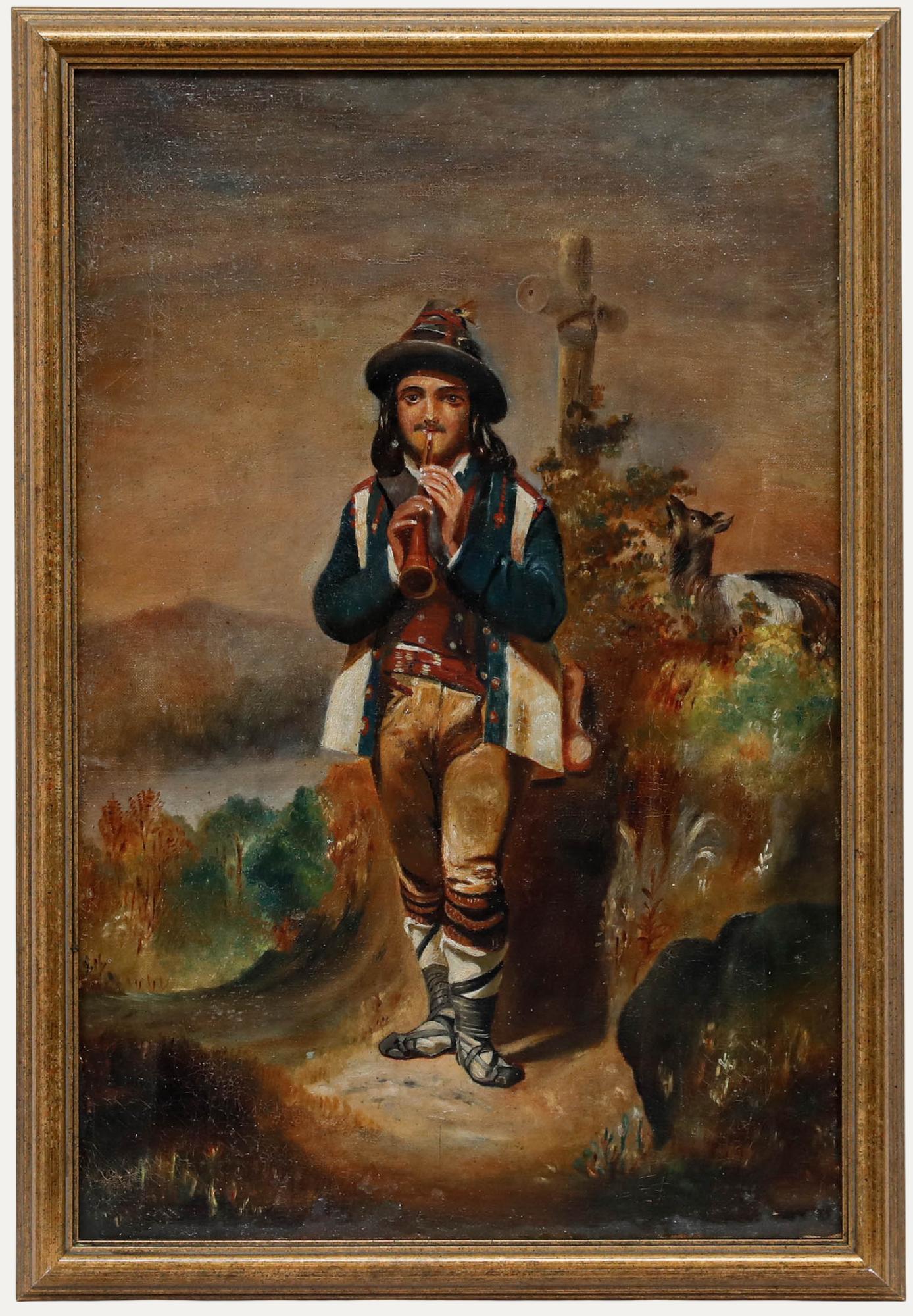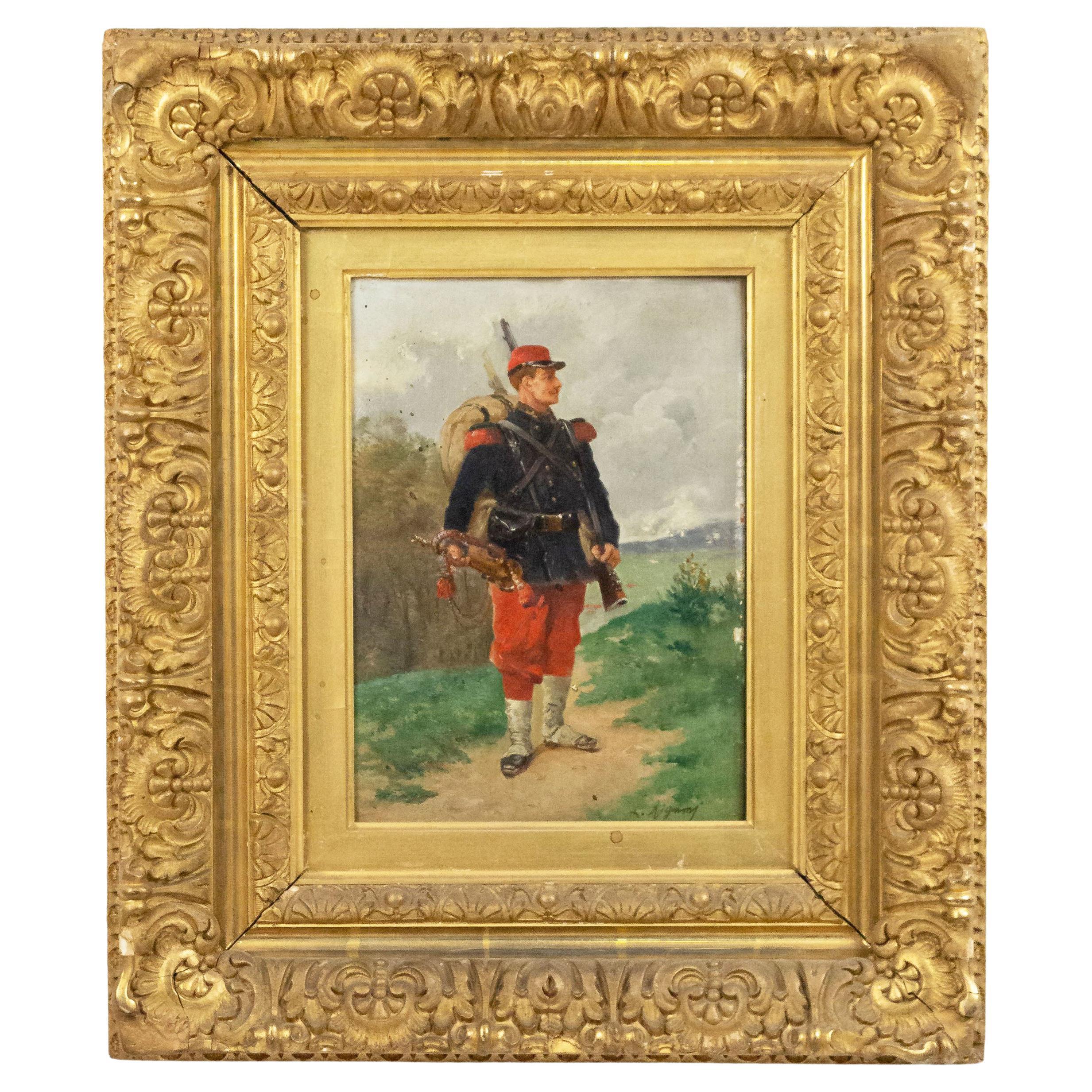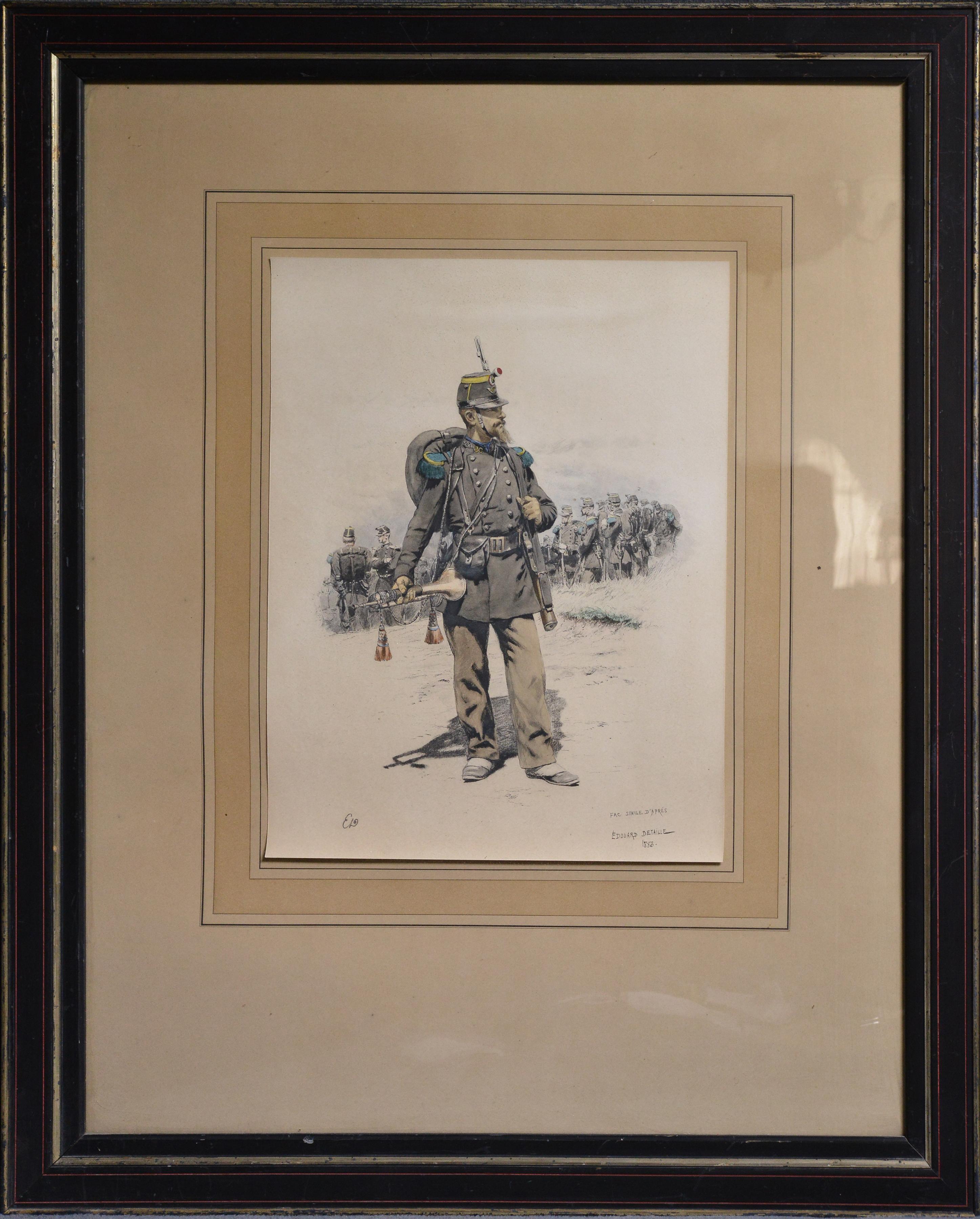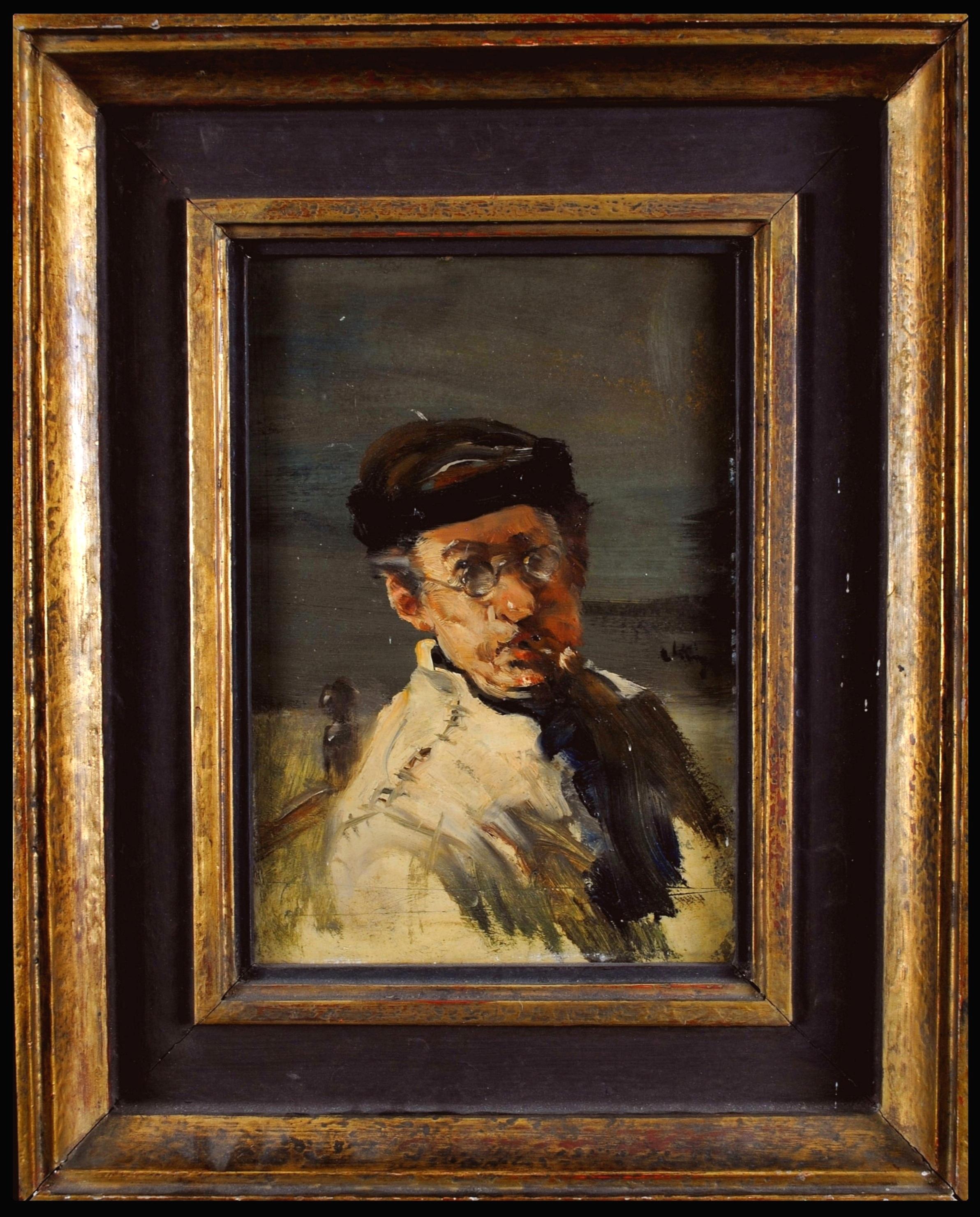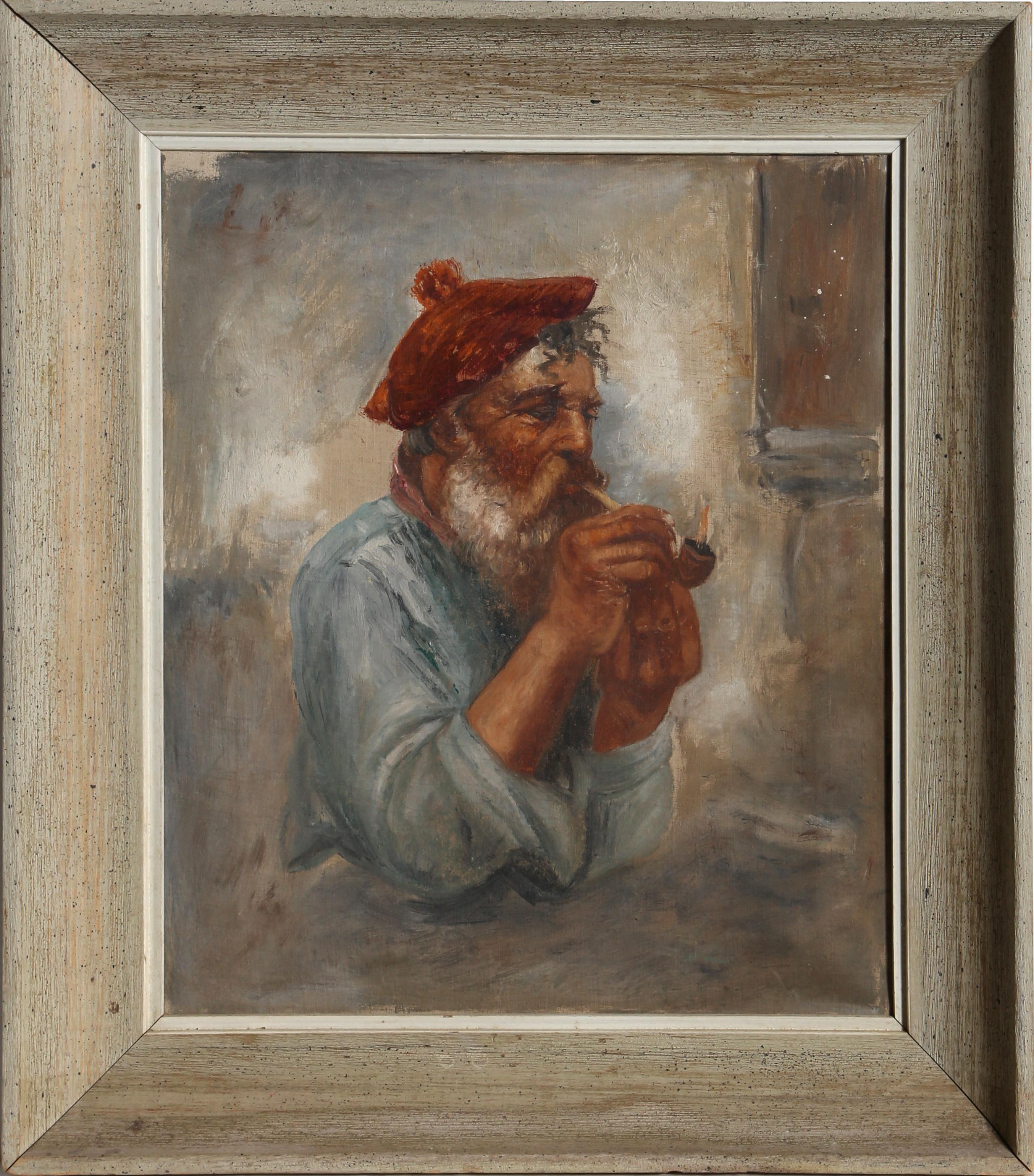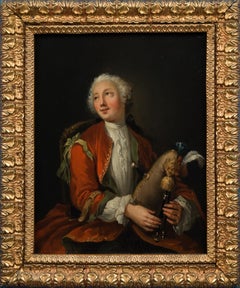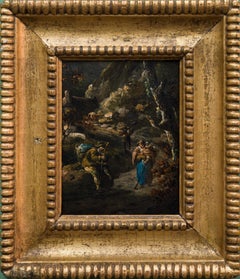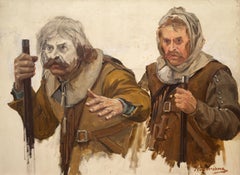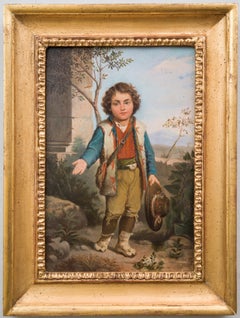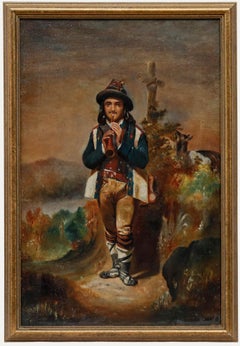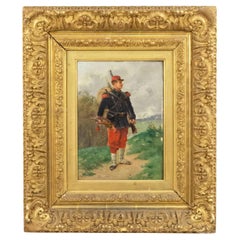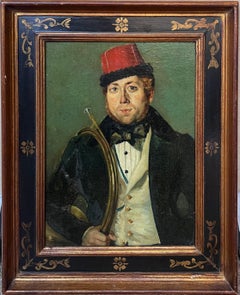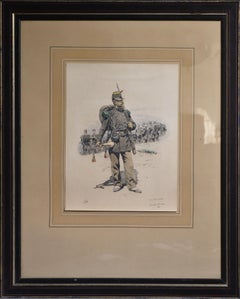Items Similar to A Soldier Blowing the Trumpet by French Artist Charles Bouchez, Oil on Canvas
Want more images or videos?
Request additional images or videos from the seller
1 of 5
Charles Bouchez A Soldier Blowing the Trumpet by French Artist Charles Bouchez, Oil on Canvas1842
1842
$2,117.89
$2,647.3620% Off
£1,567.99
£1,959.9820% Off
€1,760
€2,20020% Off
CA$2,932.37
CA$3,665.4620% Off
A$3,201.44
A$4,001.8020% Off
CHF 1,678.39
CHF 2,097.9820% Off
MX$38,882.76
MX$48,603.4520% Off
NOK 20,960.30
NOK 26,200.3820% Off
SEK 19,792.12
SEK 24,740.1520% Off
DKK 13,399.26
DKK 16,749.0720% Off
About the Item
Charles Bouchez (1811-1882) French
A Soldier Blowing the Trumpet
oil on canvas
signed and dated ch. Bouchez 1842
canvas dimensions 6.29 x 4.13 inches (16 x 10.5 cm)
frame 10.23 x 7.87 inches (26 x 20 cm)
Provenance:
A Swedish Private Collection
- Creator:Charles Bouchez (1811 - 1882, French)
- Creation Year:1842
- Dimensions:Height: 10.24 in (26 cm)Width: 7.88 in (20 cm)
- Medium:
- Movement & Style:
- Period:
- Condition:Old and fine patina, frame with some minor flaws. Ready to hang.
- Gallery Location:Stockholm, SE
- Reference Number:1stDibs: LU1445210739082
About the Seller
5.0
Platinum Seller
Premium sellers with a 4.7+ rating and 24-hour response times
Established in 2020
1stDibs seller since 2020
199 sales on 1stDibs
Typical response time: <1 hour
Associations
International Confederation of Art and Antique Dealers' Associations
- ShippingRetrieving quote...Shipping from: Stockholm, Sweden
- Return Policy
Authenticity Guarantee
In the unlikely event there’s an issue with an item’s authenticity, contact us within 1 year for a full refund. DetailsMoney-Back Guarantee
If your item is not as described, is damaged in transit, or does not arrive, contact us within 7 days for a full refund. Details24-Hour Cancellation
You have a 24-hour grace period in which to reconsider your purchase, with no questions asked.Vetted Professional Sellers
Our world-class sellers must adhere to strict standards for service and quality, maintaining the integrity of our listings.Price-Match Guarantee
If you find that a seller listed the same item for a lower price elsewhere, we’ll match it.Trusted Global Delivery
Our best-in-class carrier network provides specialized shipping options worldwide, including custom delivery.More From This Seller
View AllPortrait of a Young Man with Bagpipes, Follower of J.H. Tischbein the Elder
By Johann Heinrich Tischbein the Elder
Located in Stockholm, SE
Follower of Johann Heinrich Tischbein the Elder (1722–1789)
Man with Bagpipes
oil on oak panel
no signature
25 × 19 cm (9.8 × 7.5 in)
31 x 26 cm (12.2 x 10.2 in)
This refined 18th...
Category
18th Century Rococo Portrait Paintings
Materials
Oak, Oil, Wood Panel
A Small Old Painting Called Rocky Path With Figures
By Thomas Barker of Bath
Located in Stockholm, SE
This exquisite painting, titled "Rocky Path With Figures" is a captivating example of Thomas Barker of Bath's talent. Despite its small size, measuring only 13 x 11 cm, this piece sh...
Category
Early 19th Century Figurative Paintings
Materials
Oil, Panel
$3,273 Sale Price
20% Off
Oil Sketch for the Painting "Gustavus II Adolphus before the Battle of Lützen"
Located in Stockholm, SE
This is an oil sketch for the famous painting "Gustavus II Adolphus before the Battle of Lützen" today in the Göteborgs Konstmuseum's collection.
There is something special with an ...
Category
1890s Portrait Paintings
Materials
Canvas, Oil
Portrait of a Young Boy With Hat, Possibly Painted by Gustaf Brandelius
Located in Stockholm, SE
Unknown Artist, Possibly Gustaf Brandelius (1833-1884)
Portrait of a Young Boy With Hat
oil on tree panel
painted c.1850-70
panel 9.05 x 5.90 inches ...
Category
1860s Portrait Paintings
Materials
Oil, Wood Panel
Harvest Scene With Farmer and Scythe, 1886
Located in Stockholm, SE
"Harvest Scene With Farmer and Scythe, 1886" is a captivating painting by the Swedish artist Alfred Thörne. Created during his travels through Germany, France, Italy, and Belgium bet...
Category
1880s Romantic Figurative Paintings
Materials
Canvas, Oil
Lost in Thoughts, Oil Sketch Painted in Brittany (Bretagne), Before 1890
Located in Stockholm, SE
We are delighted to offer a unique and evocative piece by the Swedish artist Ingeborg Westfelt-Eggertz. This small oil sketch captures a moment in time, portraying a young man seated...
Category
1880s Landscape Paintings
Materials
Canvas, Masonite, Oil
You May Also Like
Continental School Late 19th Century Oil - Shepherd Playing the Flute
Located in Corsham, GB
A charming late 19th-century oil portrait depicting a shepherd in traditional Tyrolean clothing, playing the flute in a mountain landscape. In the background, the artist captures a g...
Category
Late 19th Century Portrait Paintings
Materials
Oil
French Victorian Oil Painting of a Soldier
Located in Queens, NY
French Victorian gilt framed oil painting of soldier with horn and rifle (signed RIGAMY).
Category
Antique Late 19th Century French Victorian Paintings
Materials
Canvas
Antique French/ Italian Oil Painting Portrait of a Uniformed Brass Musician
Located in Cirencester, Gloucestershire
The Brass Band Musician
19th Century, French/ Italian School
signed oil on canvas mounted board, framed
framed: 19 x 15 inches
board: 14 x 10.5 inches
Provenance: private collection...
Category
19th Century French School Portrait Paintings
Materials
Oil
Bugler of Chasseurs Corps by Ed Detaille 19th Century Facsimile Color Lithograph
By Jean Baptiste Édouard Detaille
Located in Stockholm, SE
Bugler Foot Hunter, 1870 (lithographed facsimile 1883), Illustration after Édouard Detaille (1848 - 1912), similar in Musée de Nuits-Saint-Georges. This illustration shows a bugler from the 20th Chasseurs Battalion. "Chasseur" a French term for "hunter" or "huntsman", is the designation given to certain regiments of French and Belgian light...
Category
Late 19th Century French School Figurative Prints
Materials
Wood, Paper
Man with Pipe - 19th Century French Impressionist Smoking Portrait Oil Painting
Located in Sevenoaks, GB
A superb late 19th century French impressionist oil on board portrait of a man with a pipe. Painted with short and fast brush strokes by a highly competent artist.
A striking period...
Category
1890s Impressionist Portrait Paintings
Materials
Oil
Painter with a Pipe, Impressionist Oil Painting in the style of Gaetano Esposito
Located in Long Island City, NY
Artist: Unknown after Gaetano Esposito
Title: Painter with a Pipe
Year: circa 1900
Medium: Oil on Canvas, signed illegibly verso
Size: 16.5 x 13 in....
Category
Early 1900s Impressionist Portrait Paintings
Materials
Oil, Canvas
More Ways To Browse
Antique Trumpet
Oil Painting By Charles
1849 Painting
French Soldier
Signed Ch
Oil Painting 1840
French Soldier Painting
Charles Browning Artist
Joy Brown
Figurative Seascapes
Large Female Nude Oil Paintings
Ohio Painting
Oil Paintings Japanese
Bull Fighting
Dutch Painting 17th Century
Rembrandt Paintings
1950 Illustration
Impressionists Degas
